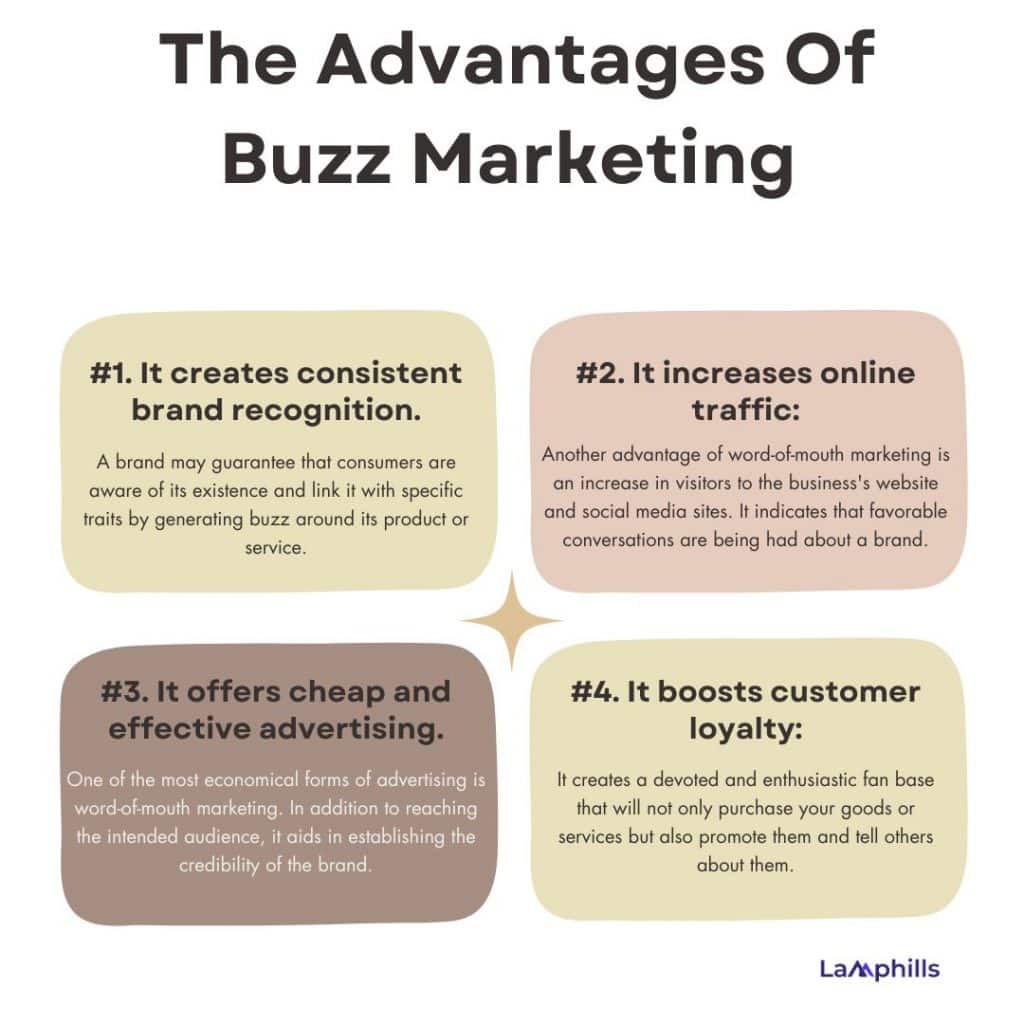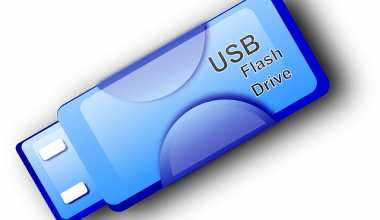Using buzz marketing initiatives, marketing teams can create a positive buzz about a new product or service by putting the word out to people in their community or following them on social media. In this article, I will examine what buzz marketing is, and provide examples of top brands that have used it efficiently.
What Is Buzz Marketing?
Buzz marketing is a marketing strategy where businesses rely on customers to spread word-of-mouth advertising about a product or initiative. Buzz marketing is a strategy used by brands to encourage consumers to express their opinions about their products with others and on social media by using hashtags and promotions. Another type of buzz marketing is social media influencers sharing their opinions on a product.
How Does Buzz Marketing Work?
Buzz marketing campaigns are used in public relations and advertising to arouse curiosity and excitement about a good or service. Buzz campaigns work best when a firm has an impending event or product launch, since their objective is to spread good word-of-mouth about the brand or product. This may be a brand-new range of products, a website, new technology, or anything else that could pique customers’ curiosity and excitement. It facilitates the development of a market so that a product can make sales and profits both before and right after introduction.
What Are the Stages of Buzz Marketing?
Here are the stages of buzz marketing:
#1. Inoculation:
At this point, the emphasis is on developing campaigns, experiences, or content that are eye-catching, distinctive, and likely to create buzz. This could entail coming up with engaging and shareable content, building viral marketing initiatives, or producing teaser promotions.
#2. Incubation:
The objective of this incubation stage of content creation is to stimulate interaction, sharing, and discussion among the intended audience. In order to propagate the word and generate buzz, this frequently entails utilizing social media platforms, influencers, and user-generated content.
#3. Infection:
The infection stage happens when a critical mass of consumers is reached by the fast-growing buzz. The trick is to maintain and extend the momentum once the initial buzz has been created. This can be accomplished by sustaining the audience’s interest, answering questions and comments, and showing up regularly in talks and debates about the company or item.
How Do I Start Buzz Marketing?
You are just a few steps away from creating the ideal campaign for your company. Now that we have enough information for you to begin creating your buzz marketing campaign, let’s dive straight into our step-by-step tutorial.
#1. Study your audience.
Before developing any product or campaign, you need to find out more about the demands and preferences of your clients. Additionally, when you use buzz marketing, your audience grows, and you have to work harder to anticipate and satisfy their requirements. Prioritize your customers when producing content.
Read Also: Understanding Your Customers: Advanced Techniques in Audience Analysis
#2. Tease your audience.
You need a teaser that is relevant and relatable in order to be able to forecast how your target audience will respond to your new product and campaign. You’ll be able to observe how people respond to your next product once you issue the teaser. Customers’ eagerness to accept your goods is indicated by their excitement, interest, and attentiveness. You will also attract more attention, broaden your audience, and grow your subscription base.
#3. Create a branded hashtag.
When it comes to new advertising efforts, hashtags are really beneficial. People can locate the information they need on social media with a branded hashtag, and brands may increase social media exposure and engagement. When the campaign is launched, you may also view the reactions of the customers.
#4. Give value.
After finishing the fundamentals, you must develop an interesting content strategy and explain the benefits of your offering. In order to engage and reach your target audience, make sure you provide them with the most pertinent information about your product.
#5. Create a video.
It’s a great idea to use video advertising as buzz marketing for your new campaign. 54% of consumers prefer to watch brand videos, according to studies, because they are easier to remember and more engaging. You may be certain that more people will remember your business in this way.
Read Also: Video Storytelling: Its Benefits to Your Brand
#6. Look for influencers in your industry.
For your product to be widely known, you need a person to serve as your brand ambassador and effectively promote it. Influencers are chosen by brands in the field of buzz marketing. Why? They have a sizable fan base, are well-liked, credible, and have influence over others. Think about locating an opinion leader in your industry who can educate their followers about the advantages and worth of your product and offer a recommendation.
In case you are still lacking ideas for your buzz marketing campaign, let’s move on to the examples to help you become inspired.
Examples of Buzz Marketing Campaigns
There are many other examples where brands have made use of buzz marketing to promote their products or services, and these are:
#1. Apple: One More Thing
Apple is a well-known company that has always been good at creating excitement about its goods. The most important ones first surfaced during Steve Jobs’s tenure, specifically in 1998.
“One more thing…” The statement that brand representatives made to wrap up their presentation was Apple’s “wow factor.” After that, individuals became enthusiastic and curious word-of-mouth marketers for the brand, talking about its new offerings.
#2. Coca-Cola: Obesity Commercial
When Coca-Cola released the honest Coca-Cola obesity commercial, acknowledging that the beverage contributes to obesity, the company made headlines, appeared on social media, and appeared in the titles of numerous blog posts.
#3. Tiger Woods: Jesus Shot
Tiger Woods would enter the water to play a shot known as the Jesus stroke, which was a unique and fun way for EA Games to introduce the Tiger Woods PGA Tour 08 game. Subsequently, it became apparent that this feature was implemented on purpose to generate excitement for the game.
#4. Durex: #EndBedroomDistancing:
Durex is well-known for its devoted fan base and has gone viral thanks to its entertaining and frequently humorous content. The company addressed the notion that, although flavored condoms can improve the mood, they might not actually express true feelings. In response, Durex unveiled a brand-new line of flavored, ultra-thin condoms and included them in their advertising. The main goal of their campaign was to end “Bedroom Distancing.”
Durex began with a pre-buzz phase and introduced a creative ad that talked about the idea of bedroom distance. Prominent individuals who contributed to this discussion were actor Prateik Babbar, Harshvardhan Rane from the television series Taish, and Haseen Dilruba. They clarified this novel idea, which a large number of people in the audience may have encountered but may not have recognized.
#5. Netflix: “Sacred Games” Promotions:
With the help of celebrities like Saif Ali Khan and Nawazuddin Siddiqui and the release of captivating teaser trailers, Netflix created a lot of anticipation for its original Indian series, “Sacred Games.”
The announcement, which read, “25 days mein kuch bada honey wala ha,” sent followers into a frenzy and garnered attention throughout social media 25 days ago. Twitter is a fantastic tool for marketers to interact with consumers, and Netflix was very active on the social media site over these 25 days, posting clever tweets about Sacred Games 2.
Buzz Marketing Campaign Strategies
The goal of buzz marketing techniques is to create enthusiasm and encourage dialogue about a brand, service, or product. These tactics seek to promote interaction, generate viral content, and drive word-of-mouth referrals. The following are a few successful buzz marketing strategies:
#1. Influencer Collaborations:
To market your business or product, work with influencers who have a sizable following in your industry. Influencers can aid in expanding the audience and creating buzz.
Read Also: How To Build Effective Influencer Relations: A Detailed Guide
#2. Challenges and Contests:
Plan imaginative challenges or contests that motivate users to participate and share on social media. Verify that the issue fits in with the goals or offerings of your brand.
#3. Experience marketing:
Provide your clients with one-of-a-kind, unforgettable experiences that will inspire them to tell others about them.
Read Also: Elevate Your Brand’s Marketing Strategies With PR Boxes
#4. Viral Content:
Create material that has the potential to become viral by making it interesting, poignant, or thought-provoking. This can apply to pictures, movies, or interactive marketing initiatives.
#5. User-Generated Content:
Invite your clients to post evaluations and experiences on social media. Post content created by users on your official channels to demonstrate your genuineness.
#6. Teasers and Mystery Campaigns:
Raise the tension and excitement for a product launch or event by delivering intriguing teaser content or messaging that seems mysterious yet makes sense.
#7. Surprise and Delight:
Astound your clients with kind words, surprising presents, or deeds of generosity that make them feel wonderfully surprised and excited to tell others about their wonderful experiences.
#8. Social Media Engagement:
Participate in conversations, leave comments, and share user-generated material to actively engage your audience on social media sites.
#9. Genuine Storytelling:
Tell genuine and accessible tales about your company’s history, core principles, or the individuals who make up the brand. Authenticity has the power to connect with clients and inspire them to tell their stories.
#10. Emotional Appeal:
Produce material that appeals to feelings such as joy, compassion, or nostalgia. Memorable and shareable information is typically more emotionally charged.
#11. Trend Riding:
Use current events, trends, and pop cultural phenomena to your advantage in your marketing initiatives to engage your target audience.
#12. Social Proof:
To establish credibility and trust, emphasize social proof from reliable sources, such as client testimonials, ratings, or endorsements.
#13. Limited-Time Offers:
To generate a sense of urgency and inspire sharing among your audience, publicize time-sensitive offers or exclusive discounts.
#14. Interactive Campaigns:
Create captivating and interactive campaigns that promote user engagement and sharing, including surveys, challenges, and quizzes.
#15. Community Building:
Establish and maintain an online forum where customers may interact, exchange stories, and develop a sense of loyalty to your company or product.
#16. Instructional Content:
Distribute instructional and informative materials that answer often-asked issues or difficulties in your field. This establishes your brand as an important asset.
#17. Local Events:
To provide opportunities for in-person interaction and word-of-mouth advertising, host or support neighborhood events and activities that appeal to your target demographic.
#18. Sustainability Initiatives:
Draw attention to your company’s dedication to eco-friendly and sustainable methods, as these subjects frequently create goodwill.
#19. Partnerships:
Work together on campaigns or initiatives with companies or organizations that complement yours to broaden your reach and create buzz.
#20. Monitoring and Measuring:
Keep an eye on internet forums and social media to determine how successful your buzz marketing tactics are and make any required corrections.
You should make use of buzz marketing strategies that appeal to the interests and preferences of your target audience while staying true to the identity and values of your company.
Read Also: Social Listening vs Social Monitoring: The Biggest Differences Explained
What Are the Advantages of Buzz Marketing?

The following are a few advantages of buzz marketing:
#1. It creates consistent brand recognition.
One of the main advantages of social marketing is increased brand recognition. It enables a business to become recognized as an authority in its field. A brand may guarantee that consumers are aware of its existence and link it with specific traits by generating buzz around its product or service.
For businesses I have worked with, buzz marketing helps us gain potential clients’ trust and boost our sales. Everyone kept talking about how efficient our customer relationship is.
Read Also: Crafting a Compelling Brand Visual Identity: Expert Tips for Trust, Consistency, and Audience Appeal
#2. It increases online traffic:
Another advantage of word-of-mouth marketing is an increase in visitors to the business’s website and social media sites. It indicates that favorable conversations are being had about a brand. This can be gauged by counting the number of people who follow a brand on social media, click on links to their website, or share their content.
Over time, we had a lot of people following us on X (Twitter) because our followers kept reposting our posts and liking them for their own followers to see.
Read Also: I Doubled My Traffic Overnight By Using This Curated Content Hack
#3. It offers cheap and effective advertising.
One of the most economical forms of advertising is word-of-mouth marketing. In addition to reaching the intended audience, it aids in establishing the credibility of the brand. It’s employed to advertise and spark interest in fresh goods and services.
This strategy works well because we don’t have to pay for ads on social media since our followers keep speaking for us. Our audience even downloaded and posted our YouTube shorts on platforms like Facebook and Instagram for others to see.
Furthermore, it disseminates information about our goods and services through social media and word-of-mouth, which helps us reach a large audience.
#4. It boosts customer loyalty:
Buzz marketing creates a devoted and enthusiastic fan base that will not only purchase your goods or services but also promote them and tell others about them. You may provide your customers with a sense of value, connection, and brand engagement by incorporating them into your buzz marketing campaign.
For instance, we ran a promotion inviting our followers to snap a picture with our branded sticker on Instagram and this led to a lot of user-generated material produced by the campaign.
What Are the Disadvantages of Buzz Marketing?
Let’s take a closer look at some of the typical problems surrounding buzz marketing in this section.
#1. You May Not Be Able To Control It:
A primary obstacle in buzz marketing is the inability to regulate the message and its dissemination. Once the word gets out, the buzz has a tendency to spread quickly and may not always reflect the intended brand image or message. This lack of oversight may result in inaccurate information, service, or product deception.
#2. There May Be Negative Buzz:
Although the goal of buzz marketing is to generate positive chatter, negative buzz can sometimes occur. Customer backlash or unfavorable reviews can proliferate quickly and harm a product or service’s reputation. It’s critical to keep an eye out for any unfavorable chatter and respond to it quickly and openly.
#3. You May Not Reach the Right Audience:
For buzz marketing to have the most impact, it must reach the appropriate audience. It can be difficult to pinpoint the intended audience and make sure they hear about the buzz. Inadequate targeting could cause the buzz to go to the wrong people, squandering time and resources.
What Is the Difference Between Viral Marketing and Buzz Marketing?
Although increasing brand recognition and conversion is the same objective of both buzz and viral marketing, their approaches and messaging are different. Viral and buzz marketing differ mostly in how messages are delivered to their intended audience. Viral marketing spreads messages to a large audience gradually, creating momentum over time. Conversely, messages are simultaneously broadcast to a large audience through buzz marketing.
Additionally, there is a distinction in the messaging that your firm uses. Buzz marketing strategies typically revolve around an event where the message may instantly reach millions of people, whereas viral marketing mostly depends on social media.
Viral and buzz marketing have the same objective, but which one you choose will depend on how rapidly you want your word to go out there.
Both approaches are ultimately quite successful and call for a strong marketing plan.
Is Buzz Marketing a PR Strategy?
A buzz campaign is a PR strategy or tool used to arouse curiosity and excitement about a product or service. Buzz campaigns work best when a firm has an impending event or product launch, since their objective is to spread good word-of-mouth about the brand or product.
You can also check out this piece on how marketing and PR can work together to build brands:
Which Company Uses Buzz Marketing?
As a component of their marketing strategies, a lot of well-known firms employ buzz marketing to create buzz, engage consumers, and start conversations among their peers. Here are a few instances:
Related Articles:
How to Become a Content Marketing Strategist in Nigeria 2024
Elevate Your Brand’s Marketing Strategies With PR Boxes
15 Best Inbound Marketing Tools That Can Save Your Business in 2024






